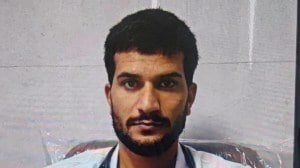The ID-Entity Bogey
A POPULAR anecdote on identity cards relates to William Morris, proprietor of British Monomarks who, in 1939, proposed to the British government that “the state issue each individual an absolutely un-duplicated... National Number”. The scheme was rejected then.

A POPULAR anecdote on identity cards relates to William Morris, proprietor of British Monomarks who, in 1939, proposed to the British government that “the state issue each individual an absolutely un-duplicated… National Number”. The scheme was rejected then.
Decades later, India went ahead with pilots for the MNIC across 20 districts and 30.7 lakh people.
The MNIC is purported to be a smart card fitted with a 16K SCOSTA chip which will carry information like the unique National Identity Number, name, date of birth, fingerprint etc. The card is to be used for a whole array of transactions, from opening bank/pension /EPF accounts, trasferring property, purchasing railway/air tickets and registering in schools and hospitals, besides being proof of identity, marital status and citizenship.
So far, a number of MNIC surveys have encountered serious procedural and implementation problems, such as at Murshidabad, which failed to verify some 90 per cent of the population. Among them are some Iranian families living in Murshidabad for 70 years. The Indian authorities think they are Iranians and they should go back to Iran and the Iranian government believes them to be Indian.
For a nation that boasts of a population of more than a billion, not all them literate, not all of them possessing primary documents, and not all them settled in one location for generations, it doesn’t require a genius to guess that the survey, if it goes for a national roll-out, will encounter many Murshidabads.
It would be practical for the state to shake off its selective amnesia of failures with earlier identity documents. For instance, ration cards, introduced by the Agricultural Prices Commission as a response to severe crop failures and subsequent food shortages in the 1960s. It became an identity document in later decades. However, by the late 1990s, in Dharavi, Mumbai, Asia’s largest slum with a population of half a million, only 151 families were issued BPL ration cards!
Crores have gone down the drain in trying to provide everyone with cards—from ration to voter cards. Crores that could have been spent elsewhere.
More crucial—and the core issue, really—is one of privacy. How far will the people accept this centralisation of database to be shared by government bodies and possibly private organisations? The time to reflect on the smartness of the latest scheme is now, before the government vests so much more than identity in a single document.
Mehmood is a researcher with the Information Society project at Sarai CSDS, Delhi.



- 01
- 02
- 03
- 04
- 05




























